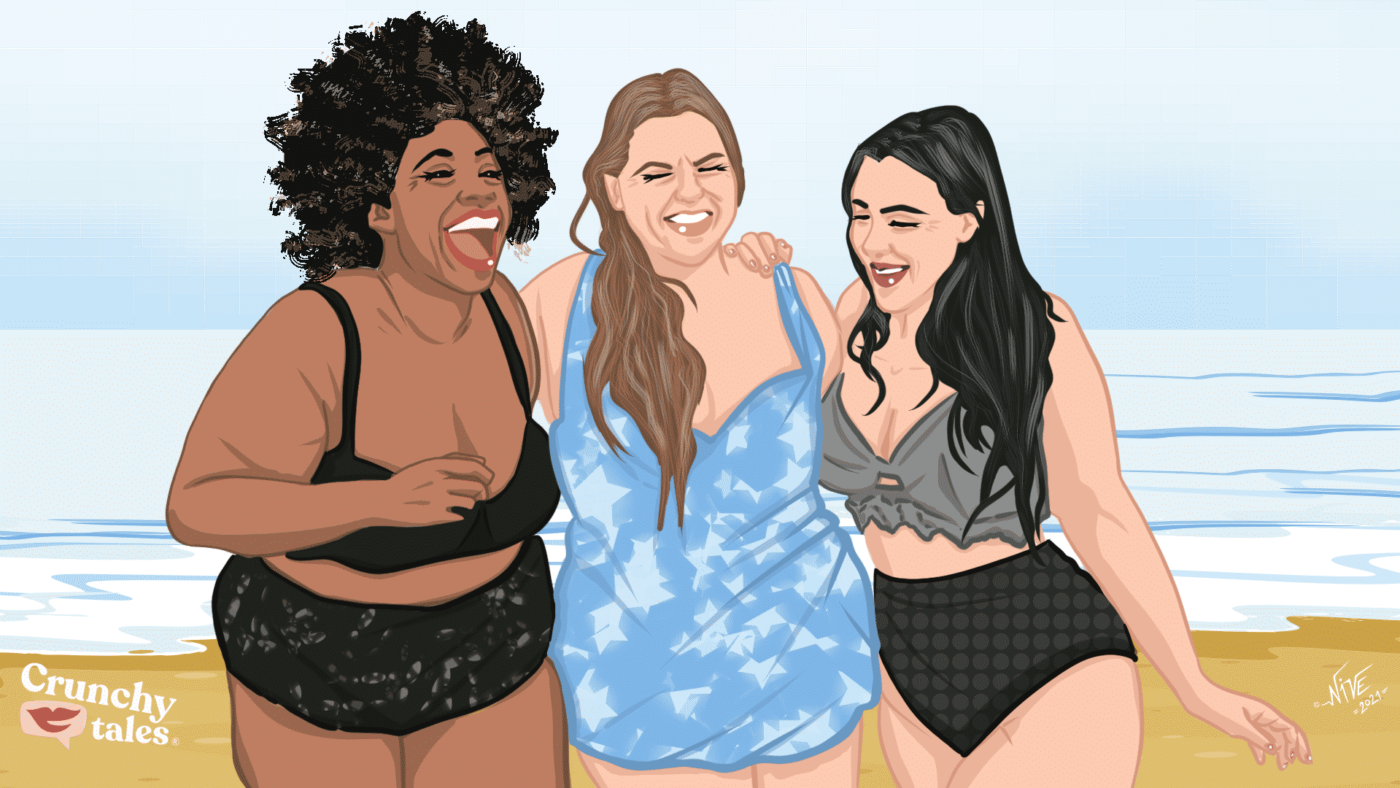Swimsuit Body Confidence: How to Embrace Yourself from the Inside Out
Stepping into a swimsuit as a middle-aged woman can be an intimidating, if not anxiety-provoking exercise that can send us into feedback loops of harsh self-judgement magnified by magazine photos, social media posts. Not to mention, the worst culprit of all, those “should” based voices in our brains that whisper: “I should work out more, eat better, lose weight, be more disciplined.” As if that isn’t bad enough, we make matters worse by convincing ourselves that everyone else looks so much better. If this sounds familiar, know that you’re not alone.
A 2014 Gallup poll showed that middle-aged people are the least likely to be satisfied with their appearance, and a separate study showed that men are more likely than women to feel good about their appearance at nearly every age level.
So, why are we women so hard on ourselves when it comes to embracing our middle-aged bodies?
It could be that midlife is a stressful time of life to begin with, a period when we face some, if not all, of the following:
- Menopause and the accompanying physical and emotional changes
- Launching children and navigating an empty nest
- Caring for ageing parents
- Other disruptive life events (eg. divorce, retirement)
When grappling with so much change, disruption, and angst, decreased self-confidence and low self-esteem can loom large and send us down a rabbit hole of negative thought patterns. Not the best time to go bikini shopping.
But I’m here to tell you: You have the power to change the negative thought patterns and feel better in your skin.
As a coach, speaker, and fear strategist, I spend a lot of time helping people understand how the thoughts we choose pave the way for the life we live. And, when it comes to body image, my personal experience with an eating disorder that spanned three decades of my life has given me first-hand knowledge of the internal havoc that can bubble up in front of a mirror.
How to feel confident in a swimsuit
Here are a few strategies that can help you reframe your thinking and lean into a more empowered, self-confident self.
Strategy 1: Shift from External to Internal
We can shift harsh inner dialogue by pivoting from an external to an internal focus targeting the things we can control instead of those we cannot.
We cannot control how others react or think, say, or feel, but we can control how we respond. Fretting about wearing a swimsuit is rooted in predictions and assumptions we make about how the world will experience us (which are simply projections of our thoughts about ourselves). We have no way of knowing how others will react to us, so why not assume that their reaction will be positive? Because when our inner dialogue is icky, that’s too steep a hill to climb.
Try this experiment:
Describe yourself in a few sentences and then notice the words you used. Were they primarily focused on appearance, or did they include your personality traits? If they were appearance-focused, were they factual descriptors (eg. I’m a 5-foot, 3-inch female with medium to light skin, blonde hair and a medium frame) or more evaluative words laced with judgement (eg. I’m short, fat, pale and my skin is wrinkled)?
This exercise helps you gauge how you think about yourself and reflects your mindset to anticipate how others will experience you. If your description is appearance-focused and laden with judgment, it can not only put a crimp on your beach vacation enthusiasm but also affect you show up in all areas of your life.
Try changing your internal “script” by rewriting your description and focusing on the things you admire and respect about yourself. For example, do you consider yourself a kind neighbour or a good friend? Are you respectful, tolerant, empathetic, accepting, strong? By maintaining your focus on the internal, you can nurture yourself and build self-esteem – a much better play than sapping your life force by worrying about the external factors you cannot change.
Strategy 2: Choose Thoughts Wisely
Recent studies show that humans have about 6,200 thoughts each day. Each one of those thoughts is a choice that we make. While many of us may believe that thoughts happen to us and therefore must be true, this is false on both counts. And, since thoughts fuel behaviour, we can end up behaving based on faulty assumptions or fictional narratives (which we humans are very adept at creating).
From a neuroscientific standpoint, if you’re routinely choosing negative thoughts about yourself and believing those thoughts, the negativity becomes more frequent and ingrained because you keep firing the same neurons in your brain—and those neurons get stronger.
By choosing different thoughts, you can strengthen different neural pathways in your brain. In other words, you can retrain your brain to think differently. It’s called neuroplasticity, and it empowers us to cultivate thoughts that serve us instead of sap us.
Let’s be clear: I’m not suggesting that this is quick or easy. But it is possible. It takes resolve and practice, like learning any new skill or behaviour. But the more you do it, the more automatic it will become.
Try this experiment:
Put on your swimsuit and stand in front of a mirror. While looking at yourself, say, “I love and accept myself exactly as I am, this minute, unconditionally.”
Say it again. Then several more times. Listen to yourself saying the words. Believe them.
The late Louise Hay spent decades teaching this “mirror work”, the practice of reciting positive affirmations to your reflection. She wrote:
The most powerful affirmations are those you say out loud when you are in front of your mirror. Because the mirror reflects back to you the feelings you have about yourself. It makes you immediately aware of where you are resisting and where you are open and flowing. It clearly shows you what thoughts you will need to change if you want to have a joyous, fulfilling life. As you learn to do mirror work, you will become much more aware of the words you say and the things you do. You will learn to take care of yourself on a deeper level than you have done before.
So go ahead and create your own affirmations. Choose any words and phrases that speak to you, that feel empowering, resonant, that tap into a positive sense of self.
Now…Go to the Beach!
Midlife is a time that can challenge us in many ways, but it is also a time of life ripe with possibility when we can try new experiences and adventures. Practice these strategies for a few weeks and see if anything shifts. Give yourself the gift of self-acceptance. You have the power within you to do it.
Then grab some sunscreen and a good book, and take your beautiful, middle-aged body, along with some new neural pathways, straight to the beach.
Like this post? Support Us or Sign up to our newsletter to get more articles like this delivered straight to your inbox!






